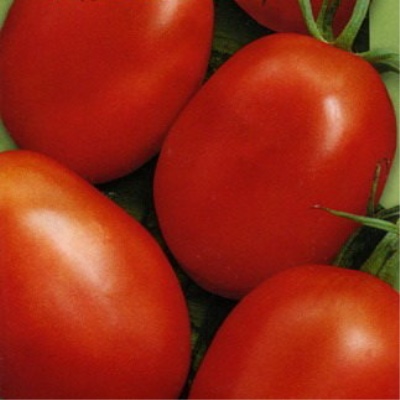
- Category: grade
- Growth type: determinant
- Appointment: fresh consumption, for pickling and preserving
- Ripening period: early
- Growing conditions: for open ground
- Bush size: undersized
- Bush height, cm: 35-40
- Ripe fruit color: Red
- Fruit shape: plum
- Fruit weight, g: 80-100
The Slivovka tomato was bred quite recently, so only a few gardeners are familiar with its fruits. This variety is characterized by abundant fruiting with minimal maintenance. Large fruits outwardly resemble a plum, which is why the tomato got this name.
Description of the variety
The variety is determinant, undersized, the height of the bush is on average 35-40 cm. This makes it possible to grow tomatoes not only in a greenhouse, but also in open ground, and some even use balconies for this purpose. People who have been engaged in the Slivovka variety for several years do not recommend planting seedlings in a greenhouse, arguing that under these conditions the tomato is not able to bear abundant fruits. Plum leaves have a bright green hue.
For tomatoes of this variety, timely watering, fertilizing and removing weeds is sufficient to obtain a gorgeous harvest in a short time.
The main qualities of the fruit
The first fruits are very large - they reach 120 grams, the next ones are slightly less - weighing on average 80-100 grams, by the time of harvest they acquire a bright red color. The skin is smooth and dense, in the hot summer season - tough, which is not to everyone's liking. Despite this, the fruits are often used fresh and in the form of salads. Canned tomatoes of the Slivovka variety are popular among lovers of homemade preparations.
One of the advantages of the variety is the resistance of tomatoes to cracking. The fruits withstand long-term storage in wooden boxes (the layers are separated from each other by newspapers) and transportation even over long distances. The fruits are tied both in hot and cold weather, and the tomatoes themselves are not afraid of frost and adverse weather conditions.
Taste characteristics
Tomatoes have a fleshy flesh with a sweet taste with a slight sourness. The aroma is bright and intense. The cream is characterized by a low juice content, which makes the fruit ideal for drying.
Ripening and fruiting
This variety belongs to the early maturing: the first fruits appear 85-90 days after the formation of leaves and emergence of seedlings. Experienced summer residents recommend planting seedlings in such a way that they can harvest fruits in July.
Yield
Plum is characterized by a high yield - one bush brings from 6 to 10 kg.
The timing of planting seedlings and planting in the ground
Seed germination for seedlings begins in mid-March. It is recommended to plant seeds in soil treated with 1% manganese solution, to a depth of 1-2 cm. The container should be covered with a film until germination appears, then systematically watered and ventilated. It is important to provide plants 12-15 hours a day using ultraviolet lamps.
55-60 days after the first shoots appear (after May 15), the seedlings can be planted in the garden, covered with a film. It is important to monitor the weather conditions: if the temperature in the region drops below +15 degrees at night, it is better to postpone this process. In early June, the film is removed, and the tomatoes are left in the open field.

Growing tomato seedlings is an extremely important process, because it largely depends on whether the gardener will be able to harvest at all. All aspects must be taken into account, from seedbed preparation to planting in the ground.
Landing scheme
The seedlings are planted at a distance of 15 cm from each other; a distance of at least 25 cm should be maintained between the rows. It is important that the sprouts have enough sunlight and nutrients.

Growing and care
The first step, without which it is impossible to grow a tomato Slivovka, is soil preparation, starting from the autumn period. The area where it is planned to plant tomatoes is dug up, and the earth is mixed with organic fertilizers.
When planting seedlings, you need to pay attention to the condition of the soil - it requires abundant watering.
When the first fruits appear, the bushes should be tied to a support to prevent the branches from breaking under the weight of the tomatoes.
In the process of leaving, the following rules must be observed.
Use warm water, monitor the number of waterings per week - it should be at least 5.
Mulch the soil, loosen the soil, remove weeds.
To speed up the growth of the bushes, biological stimulants are used.
Periodically inspect tomatoes for diseases and pests.




A plant needs different micronutrients at each stage of growth. All fertilizers can be divided into two groups: mineral and organic. Folk remedies are often used: iodine, yeast, bird droppings, eggshells.
It is important to observe the rate and period of feeding. This also applies to folk remedies and organic fertilizers.
Disease and pest resistance
Plum is resistant to almost all diseases affecting tomatoes: tobacco mosaic virus, apical rot and late blight.


Resistant to adverse weather conditions
Saplings of Slivovka survive in hot weather and frost. It is important to consider that this will not kill the bushes, but will significantly reduce the quantity and quality of the crop. Seedlings do not stretch out with a lack of sun, and the fruits are tied even in bad weather.
Review overview
The Slivovka variety is very popular among beginners and experienced gardeners. They note that, subject to the basic principles of care, the tomato will delight you with a gorgeous harvest.

























































































